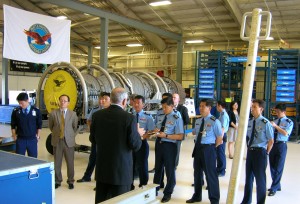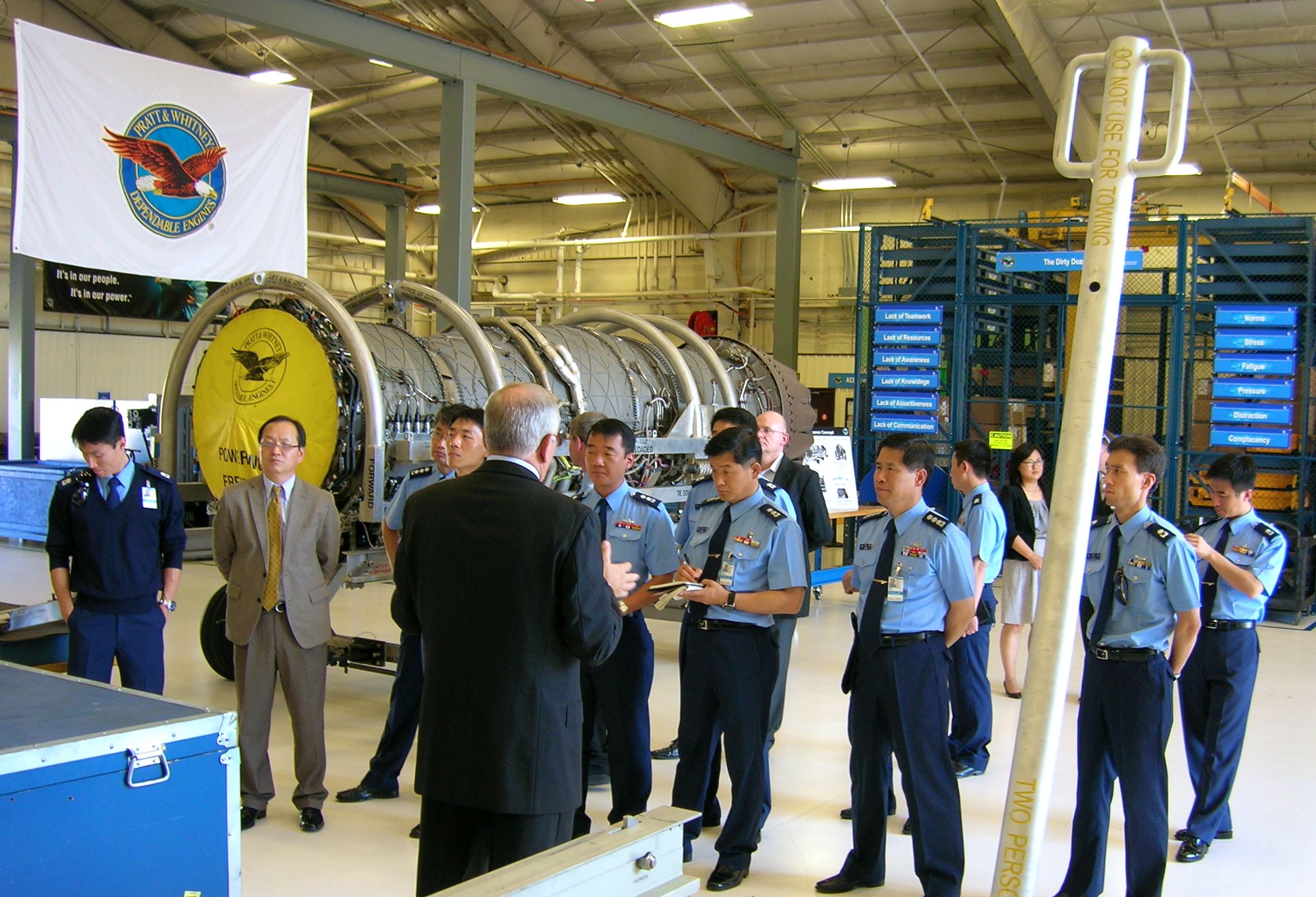2013-09-28 Earlier Ed Timperlake looked at the South Korean evaluation Silent Eagle and underscored the need for South Korea to reconsider.
John Boyd in his lecture (which I sat through twice) had a sine qua non building block for his work: the F-86 versus Mig-15 exchange rate kills by his beloved F-86 in “MIG Ally. ”
The exchange rate was approximately 10 to 1.
Lessons learned at MIG Alley were essential for all of Boyd’s theories.
MIG Alley is a “street” in the Korean skies up to the Yalu River. The “owners” of this “air estate” is South Korea. With such lessons in mind, 15 South Korean Air Chiefs, wrote to South Korean President to not select “Silent Eagle.”
Give the Korean Generals full credit in NOT trying to fight the same type of historically successful MIG Alley fighter sweep engagements. In their letter to the President of South Korea they recognize F-35 technology as moving forward and the “Silent Eagle” vectoring them back to the past.
They know that the F-15 has over a 100+ to 0 kill ratio, yet still make a public request for F-35s.
What makes the fifth gen so formidable is that stealth is a survivability enhancer both offensively and defensively.
The question is simple facing choice between the old and the new:
Is stealth a design factor of adding capability to an existing airframe or multiplying total airframe effectiveness from a new start design?
Stealth is a key element of fifth generation aircraft, but as Timperlake has emphasized in other analytical pieces, the combat systems carried on the F-35 and their ability to be fused is really the core competence of the aircraft.
Stealth is an enabler; the combat systems and the ability to share data across the fleet are the killer advantages.

With South Korea sitting at the center of the Second Nuclear Age, the former air chiefs highlighted the importance of a new combat capability to deal with North Korea.
This combat capability is the F-35 enabled South Korean and American forces.
As we argued earlier:
Among the key elements presented by the Chiefs are the following:
South Korea lives in a tough neighborhood, and one populated by powers modernizing the naval and air assets;
South Korea needs a 5th generation aircraft in order to “respond to the North Korean threat and potential threats from surrounding countires.”
Fifth generation aircraft are essential because only they “can eliminate the Norh Korean nuclear threat by infiltrating North Korea’s dense air defense network.”
South Korea lives in a neighborhood where allies and adversaries alike are moving down the path towards transitioning to stealth aircraft;
The silent eagle is not a 5th generation aircraft; it is an aircraft built on “a model that was first produced in 1970s and has not been built into an actual tangible figure. Thus, doubts rise on the possibility of remodeling the fuselage.”
And the chiefs argued that even if initial costs of the F-35 might be higher than a “silent eagle” (and they are questioning whether that really will be true” or as the Chiefs put it: “No doubt there is a difference in capabilities and cost between an aircraft that was produced 40 years ago and a plane that applied high-end technology and material.”
The bottom is clear for the chiefs: fifth generation aircraft are not a luxury but a necessity for 21st century South Korean defense and security.
Now the South Korean government when announcing its decision highlighted the importance of the F-35 and its combat systems for shaping a new kill chain to deal with the threats of the Second Nuclear Age:
Briefing on the DAPEC’s decision regarding the F-X program will begin.
First, Baek Yoon-hyung DAPA spokesperson will announce the DAPEC decision
Baek Yoon-hyung
70th DAEPC, chaired by the MND minister Kim Kwan-jin, was held today at 1400 at the conference room at MND.
I will announce the decision for the F-X program.
“F-X program is a national weapon acquisition program to introduce fighters with high quality capabilities from overseas to prepare to deal with North Korean asymmetric combat power and seize the war initiative
Amongst three fighters including the F-15SE, F-35A, and Eurofighter, Boeing’s F-15SE was reported as the F-X project fighter candidate on the final selection candidate. However, the proposal was rejected after thorough discussion by DAPEC
DAPEC decided to reject the final project proposal after profound discussion about security circumstance and operation condition of Korea, based on the evaluation results on various categories such as mission execution capability and cost.
Going forward, MND and DAPA will collaborate with related agencies to re-execute the project as fast as possible to minimize the force vacuum. Suggested methods include quantity adjustment or total project budget modification.
This is all for the DAPEC decision on the F-X program
Kim Min-seok
The background for such decision is because majority of the DAPEC members agreed to reject it. Comprehensive evaluation result showed that, we need to consider north Korea’s asymmetric combat power like the nuclear weapons, recent security circumstances and global aerospace technology development trend and have decided to recommence the program
Especially we need to build kill chain as a key strategic power as a retaliation measure against ground provocation. Also we assessed that our Air Force should rise along with the global aerospace technology transition to the 5th generation.
Therefore, as mentioned before, we will re-execute the program while keeping in mind of following factors: Partial order adjustment, total project budget modification, minimize force vacuum, regulations and legislatures on the project re-execution.
For that, head of the MND strategic resources will be appointed as the T/F leader, and he will be working closely with the Chief of staff, Air Force, DAPA and associated parties to try to execute the program in the shortest time possible to avoid force gap.
The kill chain they have in mind is connecting the F-35 with ground assets — including missile defense — and could include sea-based Aegis systems to provide a comprehensive attack and defense enterprise against North Korean systems.
The South Korean government has decided to move forward towards this future.


